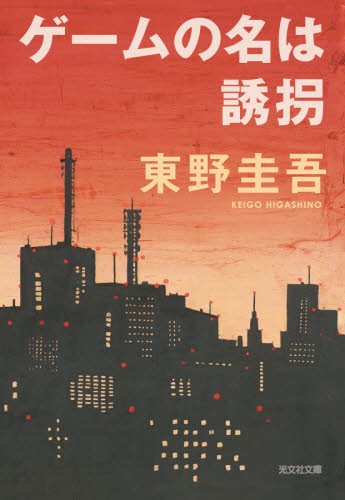Kobunsha Bookmark
The Name of the Game Is Kidnap
Information will be available after you log in. Please create an account.
Rights Information
Other Special Conditions
Abstract
Thirty-something creative whiz Shunsuke Sakuma, who works for an ad agency, is subjected to the greatest humiliation of his career when an event he has been planning for client Nissei Automotive is quashed by Nissei VP Katsutoshi Katsuragi. When he goes to call on Katsuragi at his residence one night to lodge a protest, he arrives just as Katsuragi’s 20-year-old daughter Juri is sneaking out over the wall. She tells him she is running away from home because she can no longer stand the abuse she has suffered since she was little, as the misbegotten daughter of an illicit affair. Sakuma and Juri decide they will challenge her father, a self-avowed “master of games,” with a game of their own making—a faked kidnapping of Juri. They succeed in extracting a ransom of ¥300 million (about US$3 million) from Katsuragi.
Several days later, Sakuma is watching the news when it is reported that Juri has been murdered, and he is astonished to realize that the woman he had “kidnapped” was not Juri at all. Who, then, was she? Soon the imposter reappears, and he learns that she is actually Juri’s 17-year-old half-sister, Chiharu, who claims that she inadvertently killed Juri in an argument on the very night Sakuma had first met her. In order to cover up Chiharu’s crime, Katsuragi had then deftly taken advantage of the false kidnapping to spread the story that Juri had been kidnapped and killed by her kidnapper. Sakuma has had the tables turned on him in his own game, and he must once again grit his teeth in humiliation.
Even so, Katsuragi’s deception remains in danger of unraveling if anyone finds out that it was a false kidnapping, and that’s a possibility as long as Sakuma is alive. Sakuma in fact has an ace in the hole: a photo of Chiharu happily making dinner at Sakuma’s house during the time she was pretending to be the kidnapped Juri, which proves that she was a co-conspirator with Sakuma. The final victor of the kidnap game is Sakuma. The book was adapted into a film that was released in 2003 (English title: G@me).
Author’s Information
Keigo Higashino (1958–) is arguably Japan’s biggest bestseller machine today. After graduating from college with a technical degree he went to work for an auto-parts maker as an engineer, but wrote fiction on the side and began submitting his work for the Edogawa Rampo Prize competition; he made his literary debut in 1985 when he won the prize for Hōkago (After-School Hours). With this success under his belt he turned to writing full-time, and by the mid-nineties his works were drawing considerable attention. When he won the Mystery Writers of Japan Award in 1998 for the novel Naoko (tr. 2004; original title Himitsu), it became a huge hit, and in the years that followed he produced one bestseller after another. After five previous appearances on the short list for the coveted Naoki Prize, he finally won in 2006 for The Devotion of Suspect X (tr. 2011); the English translation of this work was also nominated for an Edgar award in 2012. He is best known for the Detective Galileo series, to which Suspect X belongs, and the Detective Kaga series, set in Tokyo’s old shitamachi (low city) area and to which Shinzanmono (Newcomer; winner of a Konomys No. 1 ranking) belongs. Higashino also boasts an extensive and varied body of other works, including black-humor novels. The novel Namiya Zakkaten no kiseki (The Miracles of the Namiya General Store) received the Chuo Koron Literary Prize in 2012, Mugenbana (Dream Flower) the Shibata Renzaburō Award in 2013, and Inori no maku ga oriru toki (When the Curtain Falls on Prayer) the Yoshikawa Eiji Prize for Literature in 2014.
| Series/Label | --- |
|---|---|
| Released Date | Jun 2005 |
| Price | ¥590 |
| Size | --- |
| Total Page Number | 339 pages |
| Color Page Number | --- |
| ISBN | 9784334738853 |
| Genre | Literature / Novel > Mystery |
| Visualization experience | YES (Adapted into a film in 2003.) |





